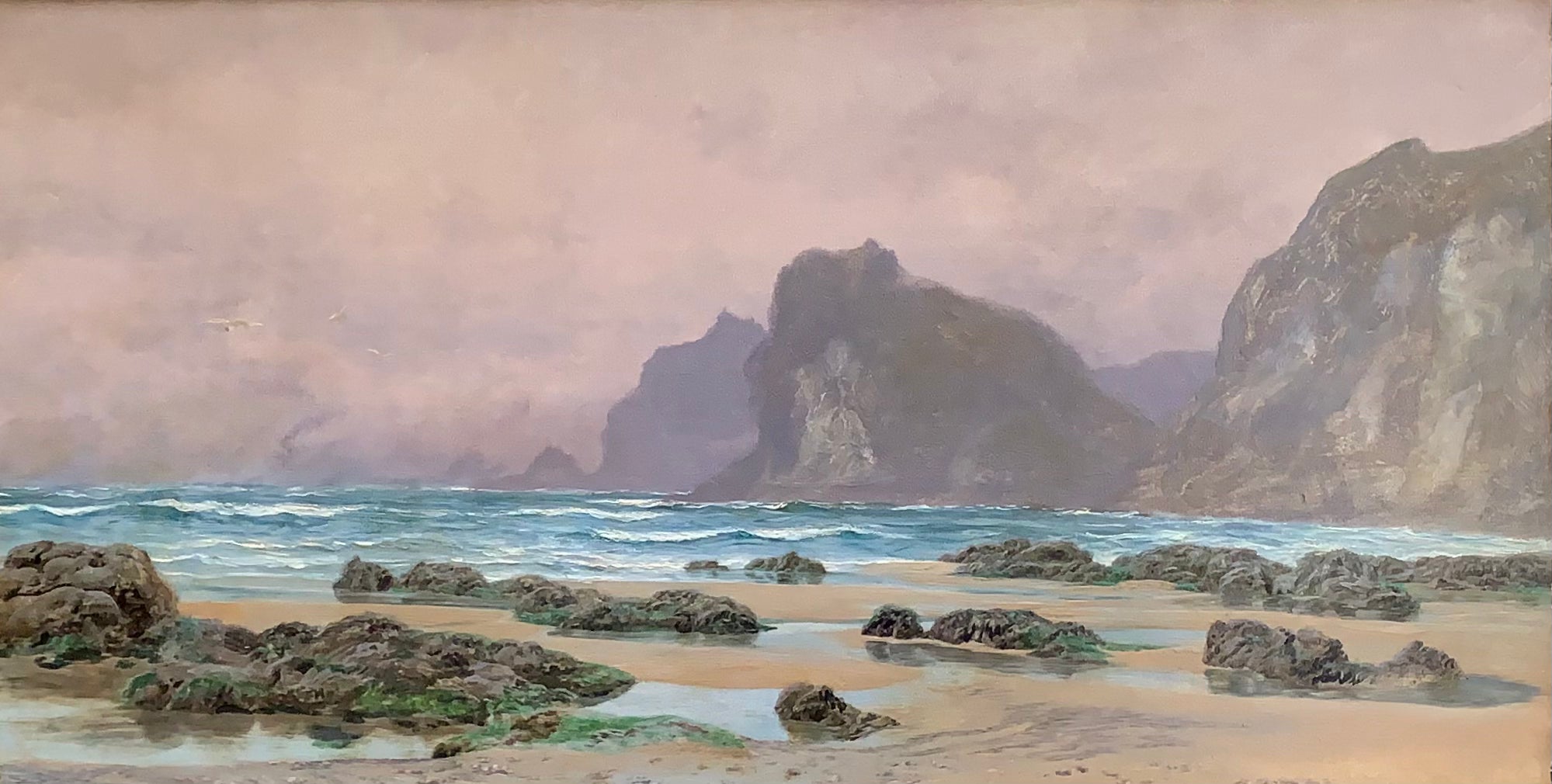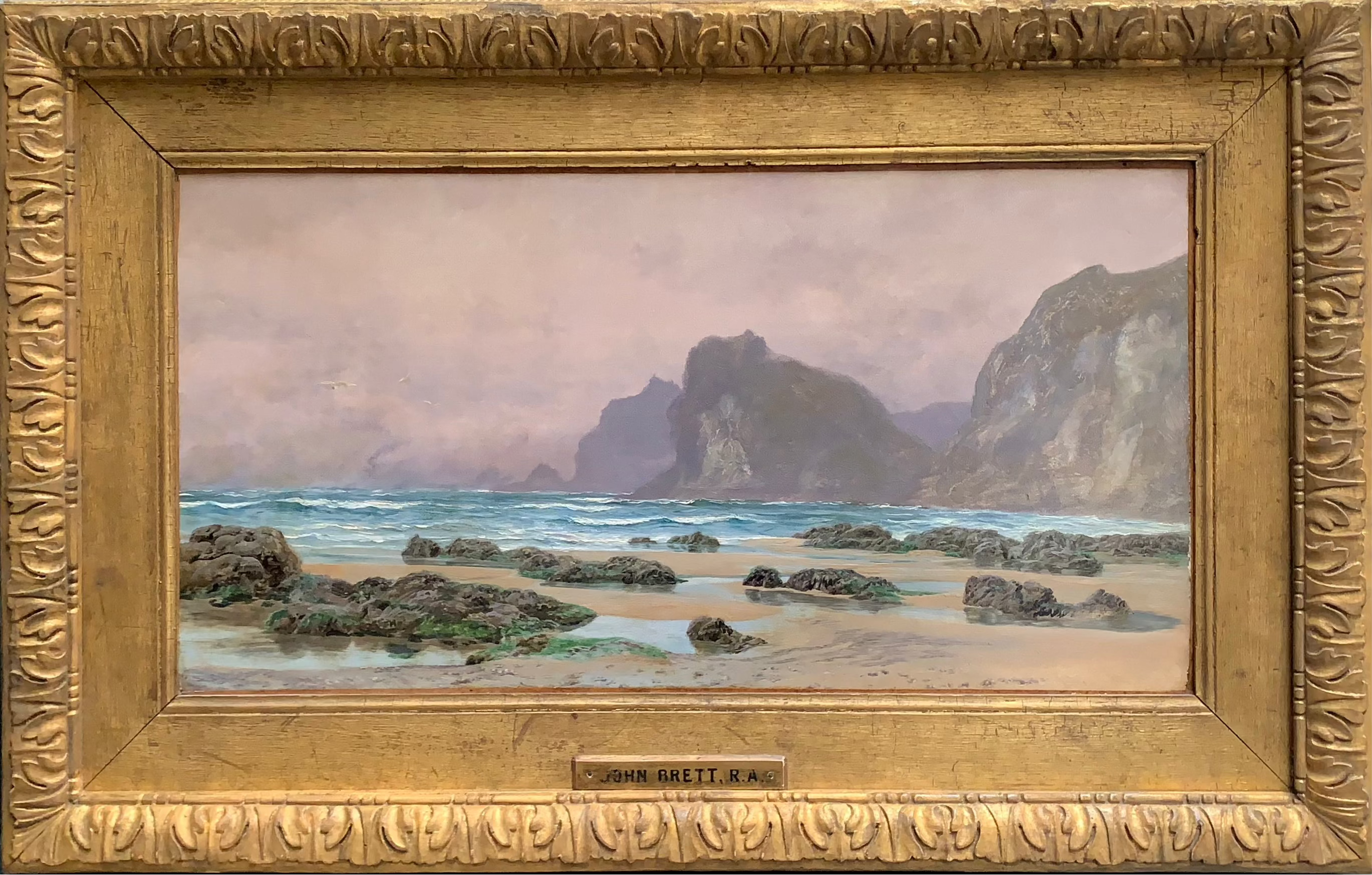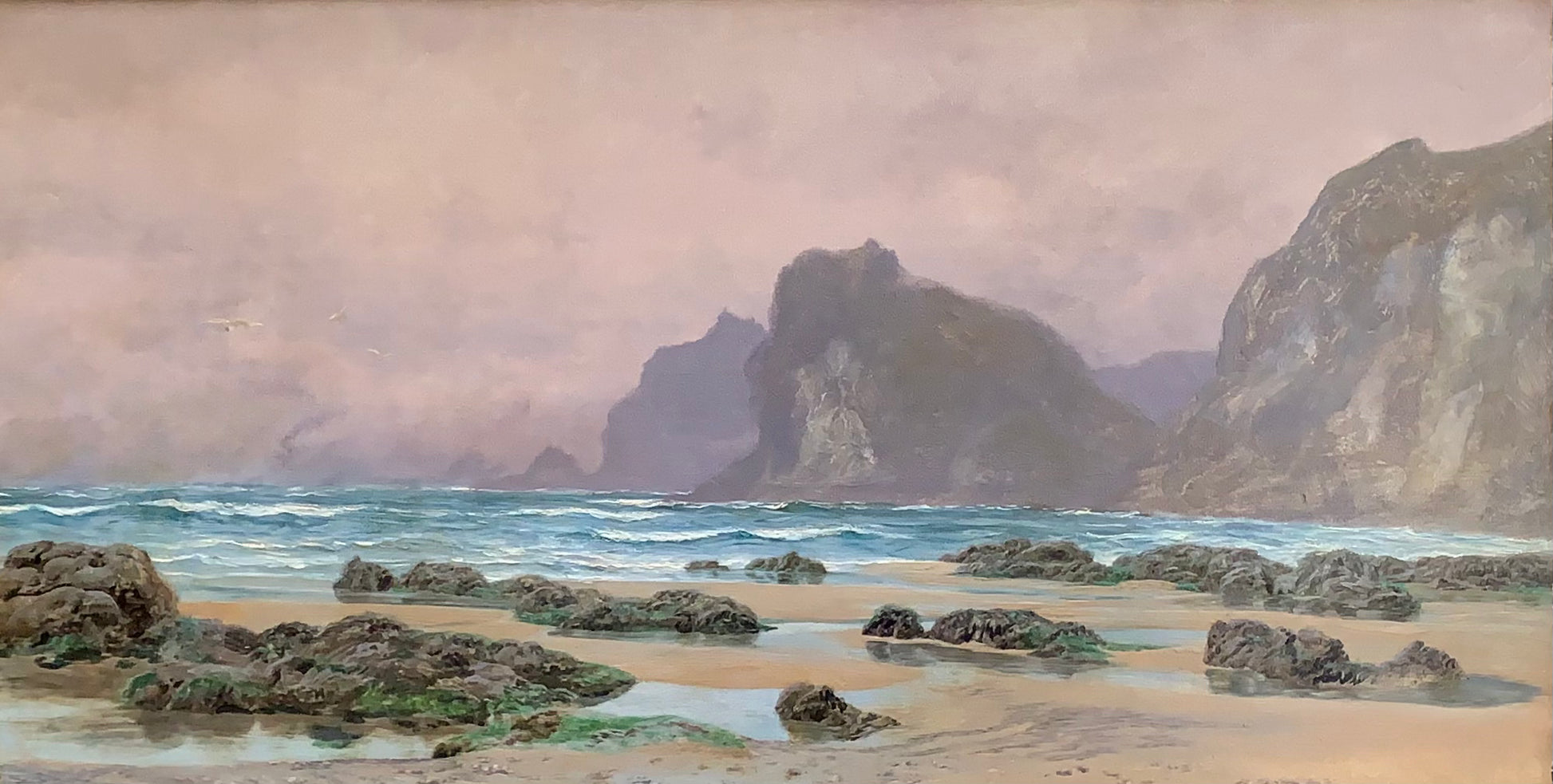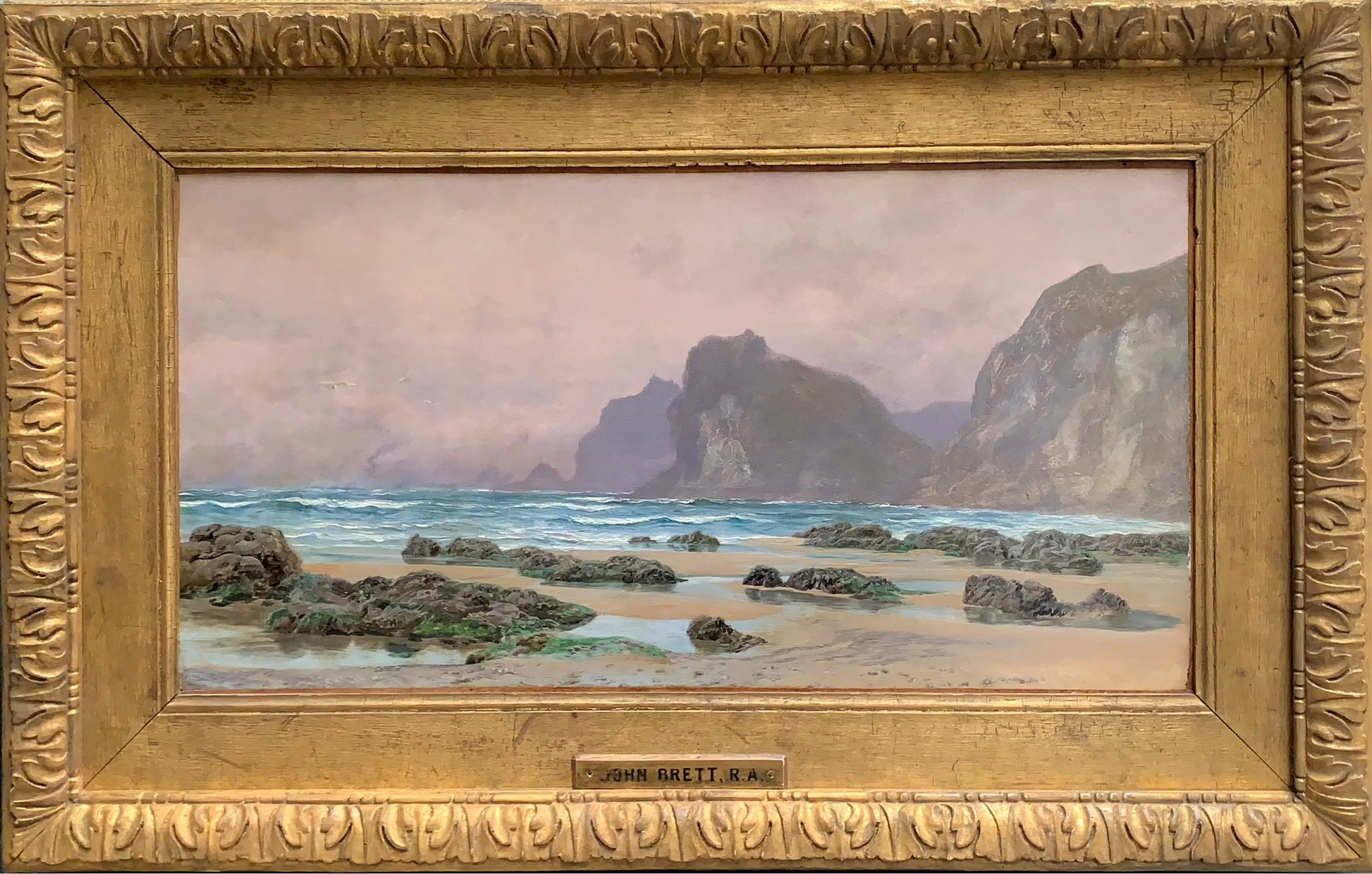

John Brett
Kynance Cove
Oil on canvas, signed & dated 1877 faintly lower right
Image size 18 3/4 x 9 3/4 inches (47.5 x 24.5 cm)
Original gilt frame
Brett painted this scene in August 1877, a similar scene is in the book on Brett page 808.
Lion rock in the middle and Bishop Rock to the right.
In this captivating landscape painting, Brett masterfully captures a cloudy sunrise over Kynance Cove, situated on the eastern side of Mount’s Bay in Cornwall. The small, crashing waves and shimmering pools of water evoke a crisp, invigorating morning, with the distant cliffs looming majestically over the water’s edge. The wet sands and moss-covered rocks scattered across the beach extend the shoreline, drawing it towards the viewer, stretching it across the foreground. The subtle portrayal of seagulls soaring through the clouds further enhances the windy ambiance of the scene as they are depicted scattered within their flock.
John Brett
John Brett, a British artist associated with the Pre-Raphaelite movement, was noted for his meticulously detailed landscapes. Born near Reigate in 1831, Brett was the son of an army veteran and shared a studio with his sister, Pre-Raphaelite artist Rosa Brett, between 1850 and 1851.
Brett studied under artists James Duffield and Richard Redgrave before entering the Royal Academy schools in 1853. However, after meeting John Ruskin and William Holman Hunt through his friend, poet Coventry Patmore, Brett became captivated by the anti-establishment ideas of Pre-Raphaelitism.
Brett travelled to Switzerland, where he worked on topographical landscapes and was influenced by the techniques of John William Inchbold. In 1858, Brett exhibited, The Stonebreaker, depicting a young boy breaking stones to create a road surface in a brightly lit landscape. The painting received high praise, with Ruskin commending Brett’s extreme geological and botanical detail. Ruskin partially funded Brett’s trip to Val d’Aosta predicting that Brett would create a masterpiece there, after the works exhibition in 1859 Ruskin purchased the painting.
Throughout the 1860s, Brett continued to paint meticulously detailed landscapes, often staying in Italy. He was always keen to stress the scientific precision of his depictions of nature, infusing them with moral and religious significance as recommended by Ruskin. In his later years, Brett focused more on coastal subjects and seascapes
In addition to his artistic pursuits, Brett was a keen astronomer, having studied the subject since childhood and in 1871, he was elected a Fellow of the Royal Astronomical Society. He was also an elected member of the Art Workers Guild, where he was later elected master in 1890.
Museums
Tate Gallery 1893, Pre-Raphaelites Exhibition
The Metropolitan Museum of Art, New York
Royal Academy of Arts, London
Fitzwilliam Museum, Cambridge
National Museum of Wales, Cardiff
Penlee House Gallery and Museum, Penzance



